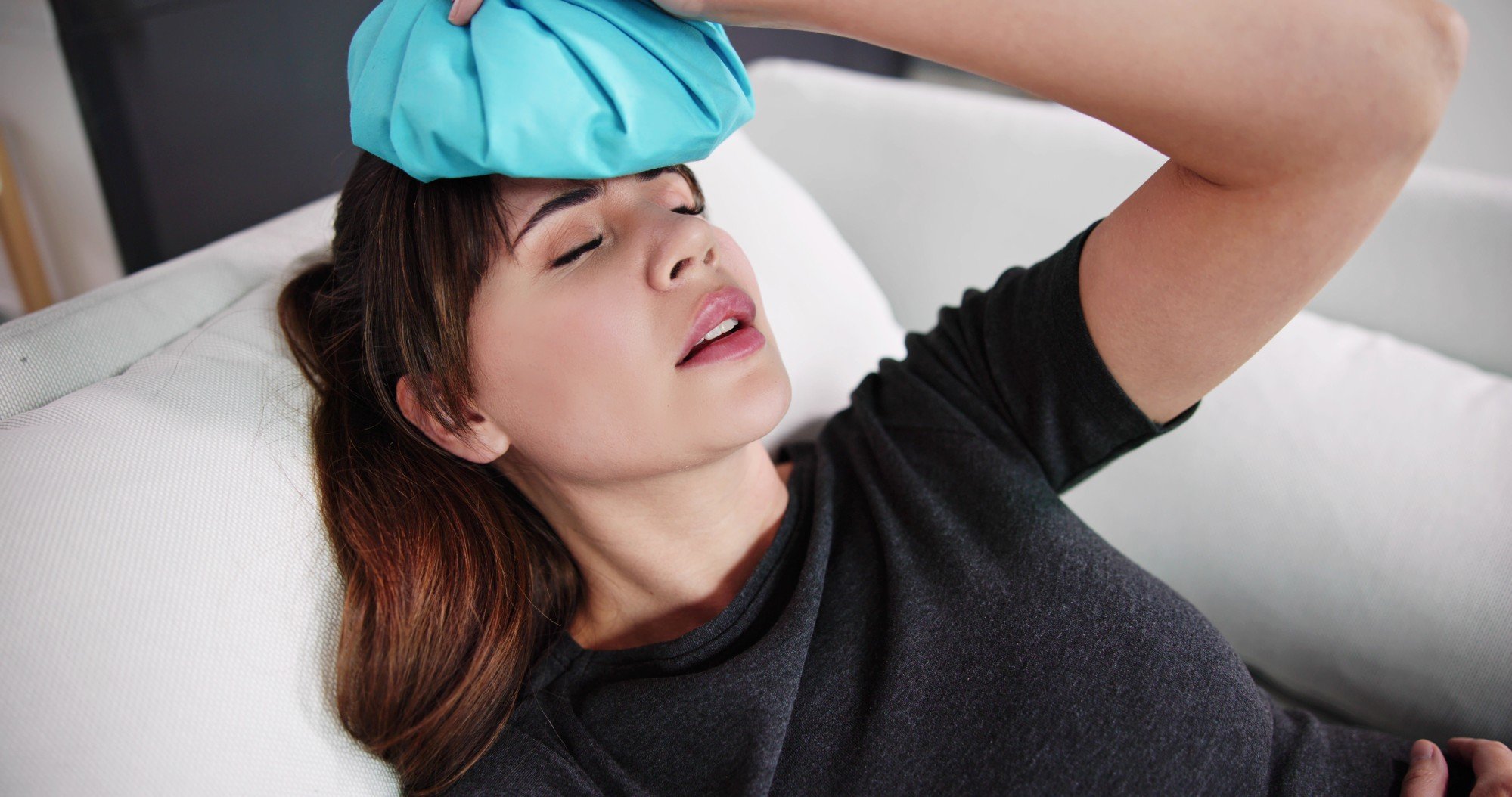
How medicine for headache or migraine relief could make pain worse: a neurologist explains ‘medication overuse headache’ and advises on treatment
- Regularly taking painkillers for headache or migraine relief could cause medication overuse headache (MOH), a sort of chronic rebound pain
- Writer Anthea Rowan describes her lifelong struggle with migraine, how she developed MOH – and how she is successfully dealing with it so far
I have suffered headaches for as long as I remember. For vomit-inducing migraine attacks from the age of four, my mother dispensed tiny orange baby aspirin the size of sweeteners, which didn’t help.
My husband has had one headache in his life. I can have one a day. I’m one among the billion people worldwide who battle with migraine, a leading cause of disability globally.
Hong Kong neurologist Dr Terrance Li says that for people with debilitating headaches, particularly migraines, preventive medication is key – especially in patients who have frequent attacks. This can reduce the number and intensity of headaches, and as a result, the patient will take fewer painkillers.

I have tried preventive measures, including taking propranolol, a beta-blocker; the antidepressant amitriptyline; and an assortment of recommended vitamins, including riboflavin (vitamin B2).
None of those worked for me.
Modern preventive treatments include new calcitonin gene-related peptide (CGRP) inhibitors, taken in the form of an injection every one to three months or an intravenous infusion over 30 minutes administered in clinic.
Living with migraines: women change diet, schedule to cope with attacks
These drugs work by blocking a protein in the brain and nervous system that may contribute to migraine episodes. Used to treat migraine, they can also be used to prevent headaches.
But these treatments are not available everywhere to everyone and they are expensive. In Europe and the United States they cost nearly US$1,000 a month and, Li says, around HK$3,500 to HK$4,500 (US$450 to US$580) a month in Hong Kong – and are not covered by the Hospital Authority.
My insurers, like so many others, won’t pay for them. Because I cannot function with a headache, I increasingly resort to triptans. They stimulate serotonin, a neurotransmitter found in the brain, to reduce inflammation and constrict blood vessels, to stop the headache.

Not long ago, I realised I was having them almost daily. Little did I know that such frequent use of medication was actually exacerbating the headaches. I had developed an odd, though not uncommon, condition: medication overuse headache, or MOH.
It is a sort of rebound pain caused by the frequent use of pain relief, but which happens only in the case of headache and usually only in the case of migraine. Frequent use of the medication of choice sets up a sort of chronic background headache: episodic migraines, as in my case, worsen in frequency to become almost daily headaches.
But what does “overuse” mean? How much medication is too much? And what kind of medication puts you at risk of developing this chronic condition?
“MOH is a headache occurring on 15 or more days per month developing as a consequence of regular use of acute medication for more than three months,” Li explains.
20 years of migraines. 2 traditional Chinese medicine sessions, they’re over
Those medications can vary, as can the number of days a month they are used. They could be simple analgesics, like paracetamol; NSAIDs, such as Ibuprofen; ergotamine, a tablet that can be dissolved under the tongue that works by blocking pain signals and narrowing blood vessels in your brain; triptans; opioids (codeine-based medicines); or combination painkillers, which can become a problem if they are used for just 10 days a month, and possibly fewer.
The National Headache Foundation (NHF) in the UK says MOH is common: its staff sees cases in clinic every week, but are sympathetic and understand why those who suffer frequent headaches would reach for frequent remedy.
It strongly urges against the use of combination medication that includes drugs with caffeine, and advises extreme caution in the case of codeine and opioids – less than six days a month if at all, it warns.

Patients need to understand the ingredients of the painkillers they are taking.
“The most notorious painkillers are those combination analgesia with caffeine and codeine,” Li says. Many patients in Hong Kong, he adds, take brands that can be effective in pain control but contain caffeine and/or codeine, which people might not realise.
The only way to get rid of MOH is to stop using the overused medication – to detox the brain so that it calms down. Some doctors recommend giving up the medicine entirely, at once. This is terrifying advice for somebody who suffers frequently; when I have a migraine, I can’t function at all.
A screwdriver through my eyeball: the true pain of a cluster headache
The foundation also stresses the importance of treating a migraine episode effectively on day one in the hope you get rid of it and don’t have to treat it for two or more days in a row.
MOH is the consequence of the number of days drugs are used, not the doses. Many sufferers, like me, unwittingly exacerbate the problem by taking smaller doses of medications in the mistaken belief that this is safer (and more economical – triptans are expensive). Take the full safe dose on day one, the NHF says.
Withdrawing the offending medication will only work if you can come off it for four to six weeks – not just four or five days.

There are bridging therapies and techniques to apply while you cut the medication out.
For a start, build in some rest or at least develop strategies for a quieter life if you can.
Some people swear by ice packs around the head or neck to tamp down pain; one study found that applying a frozen neck wrap at the start of a migraine, targeting the carotid arteries, “significantly reduced pain”. In another, half of the participants reported less head pain after using a cold cap for just 30 minutes.
Can intermittent fasting protect your brain health? Tips from an expert
Some foods can also be a trigger. Studies suggest chocolate, caffeine and red wine are among the biggest culprits. Foods containing MSG, cured meats, aged cheeses, pickled and fermented foods, frozen foods, and salty foods are also on many lists.
The foundation also warns against fasting for migraine sufferers, advocating small, regular meals instead.
Doctors may recommend occipital nerve blocks – injections of local anaesthetic in the area around the occipital nerves – and even Botox shots, to help ease pain while you detox.

Some drugs may also be used. The NHF recommends sufferers speak to a doctor about naproxen. As a treatment, it can be a cause of MOH, but as a short-term preventative in regular low doses as you come off the overused medication, it is sometimes helpful, the foundation says.
Hong Kong’s Princess Margaret Hospital has the only dedicated headache clinic in the city under the Hospital Authority, Li says. He urges people to see their family doctor or a headache specialist to make a correct diagnosis of headache and its causes rather than buying painkillers over the counter – “especially for those with severe or recurring headache”.
With the support of a headache doctor, I opted for a drug-supported withdrawal. It’s early, but in 12 days I’ve had only one headache.

